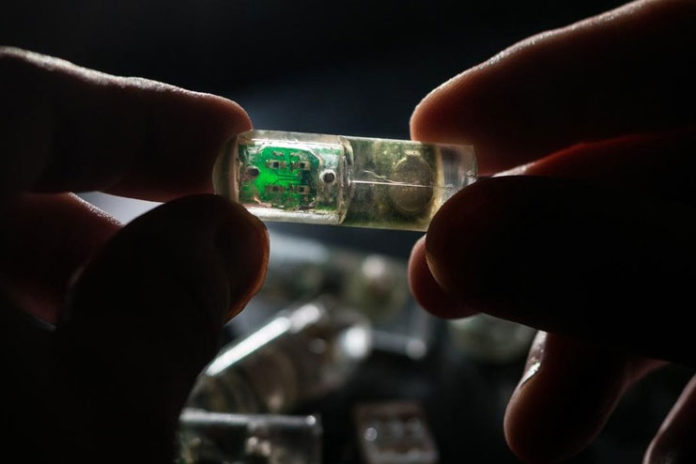The researchers of Massachusetts Institute of Technology including one India-origin invented an ingestible sensor that can aid in diagnosing bleeding in stomach or other gastrointestinal issues. The sensor is equipped with genetically engineered bacteria.
This “bacteria-on-a-chip” combines sensors with ultra low-power electronics made from living cells that convert the bacterial response into a wireless signal that can be read by a smartphone.
“The focus of this work is on system design and integration to combine the power of bacterial sensing with ultra low-power circuits to realize important health sensing applications,” said Anantha Chandrakasan, dean of MIT’s School of Engineering.
“By combining engineered biological sensors together with low-power wireless electronics, we can detect biological signals in the body and in near real-time, enabling new diagnostic capabilities for human health applications,” said Timothy Lu, associate professor at the varsity.
The research team created sensors that responds to heme, a component of blood that proved to be working on pigs. To express genetic circuit researchers engineered a probiotic strain of E. Coli that causes bacteria to discharge light when encounter heme.
The test on pigs found that it could promptly determine whether blood was present in the stomach.
Then placing bacteria into four wells on custom-designed sensor with underneath each well a phototransistor that can measure amount of light produced by the bacteria cells and relay information to a microprocessor sending a wireless signal to a nearby computer or smartphone.
The researchers likewise developed an android app that can be used to analyze the data.
The sensor, which is a cylinder with about 1.5 inches long requires about 13 microwatts of power. The researchers equipped the sensor with 2.7 volt battery with an estimate to power the device for about 1.5 months of continuous use.
The researchers anticipate that this sensor could either be deployed for one-time use or designed to remain in the digestive tract for several days or weeks by sending continuous signals.
By Sowmya Sangam














































